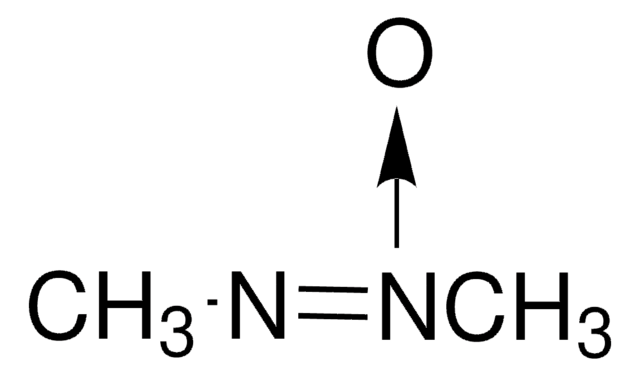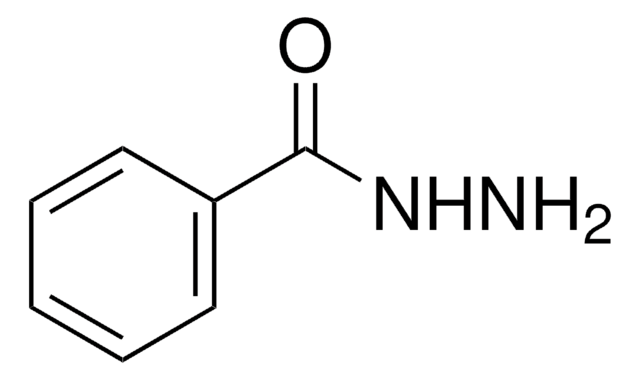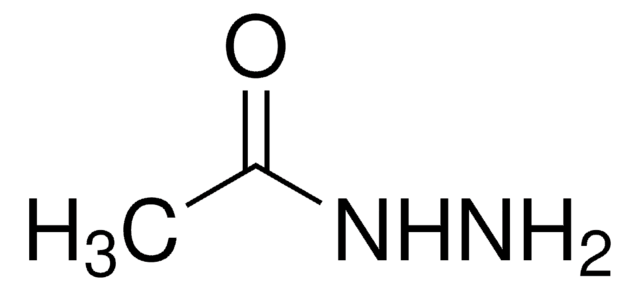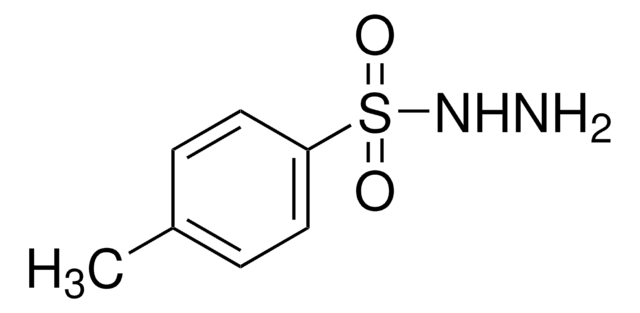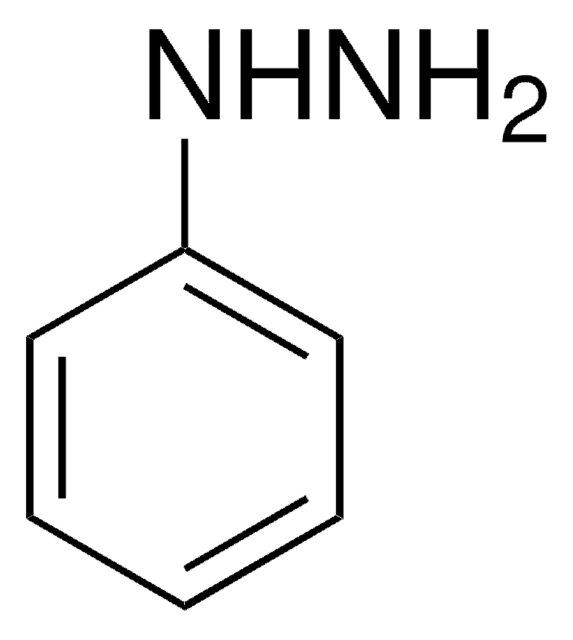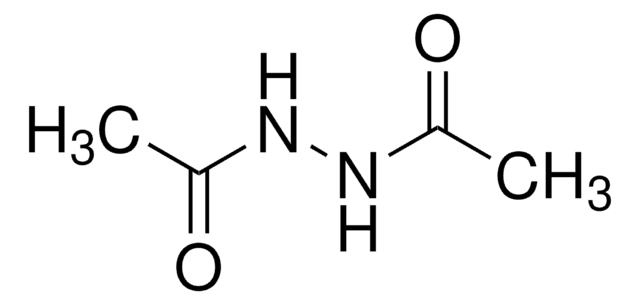추천 제품
vapor density
1.94 (vs air)
vapor pressure
103 mmHg ( 20 °C)
분석
98%
형태
liquid
autoignition temp.
478 °F
expl. lim.
95 %
refractive index
n20/D 1.4075 (lit.)
bp
60-62 °C (lit.)
density
0.79 g/mL at 20 °C (lit.)
저장 온도
2-8°C
SMILES string
CN(C)N
InChI
1S/C2H8N2/c1-4(2)3/h3H2,1-2H3
InChI key
RHUYHJGZWVXEHW-UHFFFAOYSA-N
유사한 제품을 찾으십니까? 방문 제품 비교 안내
애플리케이션
N,N-Dimethylhydrazine can react with:
N,N-Dimethylhydrazine along with ferric chloride hexahydrate forms an effective reduction system for:
- β-Naphthol via radical amination to form 1-amino-2-naphthol.
- 2-Chloro- and 2,2-dichloro-(bromo)vinyl ketones via regioselective heterocyclization to form 3-substituted 1-methyl(5-halo)pyrazoles.
- Terminal alkynes in the presence of TpRuCl(PPh3)2 (Tp = tris(pyrazolyl)borate) to form nitriles.
N,N-Dimethylhydrazine along with ferric chloride hexahydrate forms an effective reduction system for:
- Synthesizing DNA binding pyrrolo[2,1-c][1,4]benzodiazepine (PBD) imines via reductive cyclization of the corresponding nitro aldehyde.
- Transforming a variety of nitroarenes and azido compounds into the corresponding anilines and amino compounds, respectively.
생화학적/생리학적 작용
Lung and colon tumor initiator in experimental animal model.
신호어
Danger
유해 및 위험 성명서
Hazard Classifications
Acute Tox. 3 Dermal - Acute Tox. 3 Inhalation - Acute Tox. 3 Oral - Aquatic Chronic 2 - Carc. 1B - Eye Dam. 1 - Flam. Liq. 2 - Skin Corr. 1B - STOT SE 3
표적 기관
Respiratory system
Storage Class Code
3 - Flammable liquids
WGK
WGK 3
Flash Point (°F)
14.0 °F - closed cup
Flash Point (°C)
-10 °C - closed cup
개인 보호 장비
Faceshields, Gloves, Goggles
이미 열람한 고객
Masaki Honda et al.
Marine drugs, 17(2) (2019-02-06)
The red macroalga Agarophyton chilensis is a well-known producer of eicosanoids such as hydroxyeicosatetraenoic acids, but the alga produces almost no prostaglandins, unlike the closely related A. vermiculophyllum. This indicates that the related two algae would have different enzyme systems
Reaction of terminal alkynes with hydrazines to give nitriles, catalyzed by TpRuCl (PPh3)2: novel catalytic transformation involving a vinylidene ruthenium intermediate
Fukumoto Y, et al.
Organometallics, 21(19), 3845-3847 (2002)
Dmitry S Kosyakov et al.
Chemosphere, 228, 335-344 (2019-05-01)
Existing methods for cleanup of wastewaters and soils polluted with the extremely toxic rocket fuel unsymmetrical dimethylhydrazine (UDMH) are mainly based on the treatment with various oxidative reagents. Until now, the assessment of their effectiveness was based on the residual
Takao Kaneko et al.
Biological & pharmaceutical bulletin, 30(11), 2052-2057 (2007-11-06)
The effects of esculetin (6,7-dihydroxycoumarin) and its 6-glycoside, esculin, on 8-oxo-2'-deoxyguanosine (8-oxodG) formation and carcinogenesis induced by a chemical carcinogen, 1,2-dimethylhydrazine (DMH), were examined in the colons of male Fischer 344 rats. Animals were given water containing esculetin or esculin
B Toth
Cancer research, 35(12), 3693-3697 (1975-12-01)
The various synthetic substituted hydrazines, which cause tumors in animals, are briefly enumerated. To date, 19 of them have proved to be tumorigenic in animals. A number of these chemicals are found today in the environment, in industry, in agriculture
자사의 과학자팀은 생명 과학, 재료 과학, 화학 합성, 크로마토그래피, 분석 및 기타 많은 영역을 포함한 모든 과학 분야에 경험이 있습니다..
고객지원팀으로 연락바랍니다.
